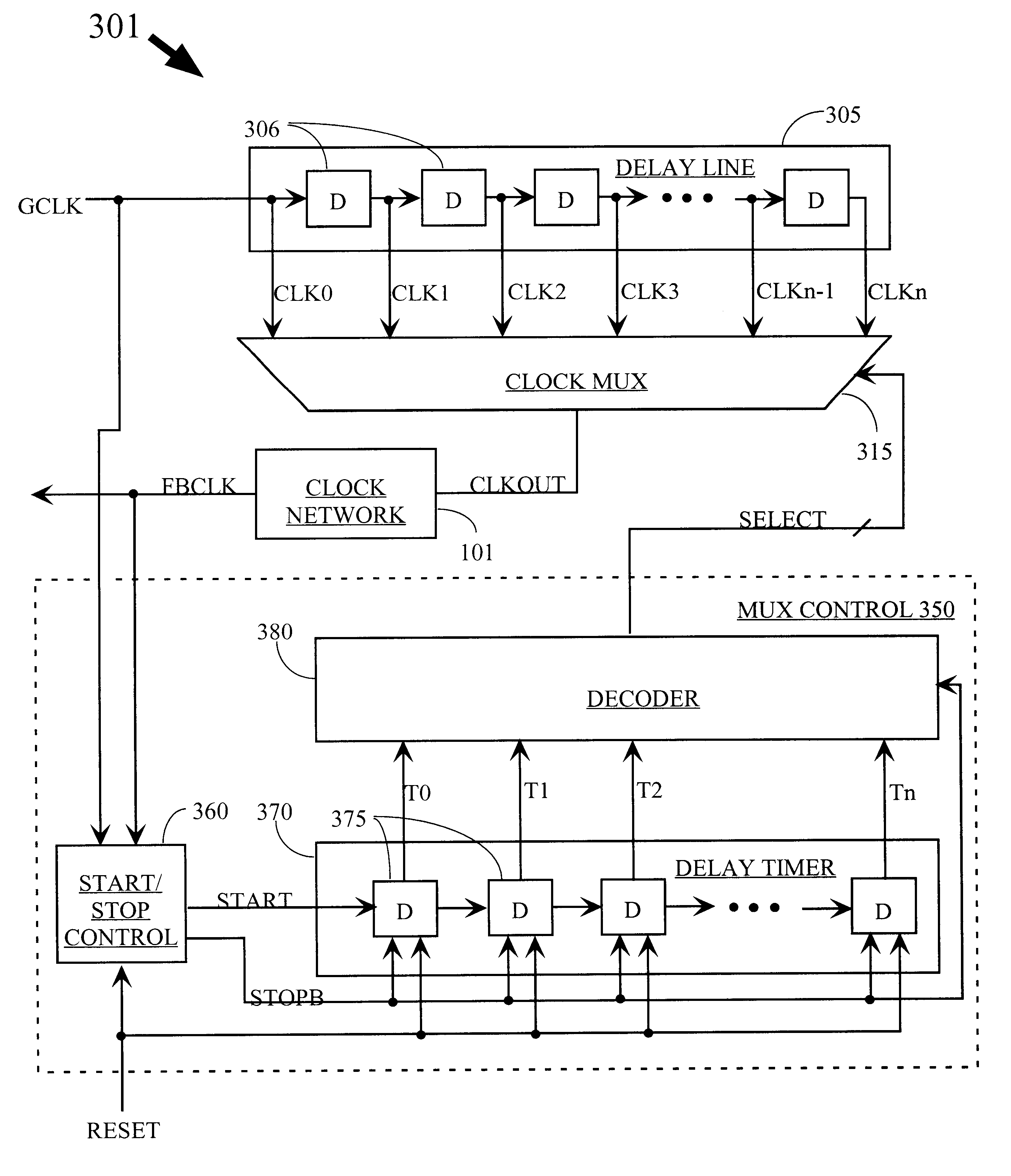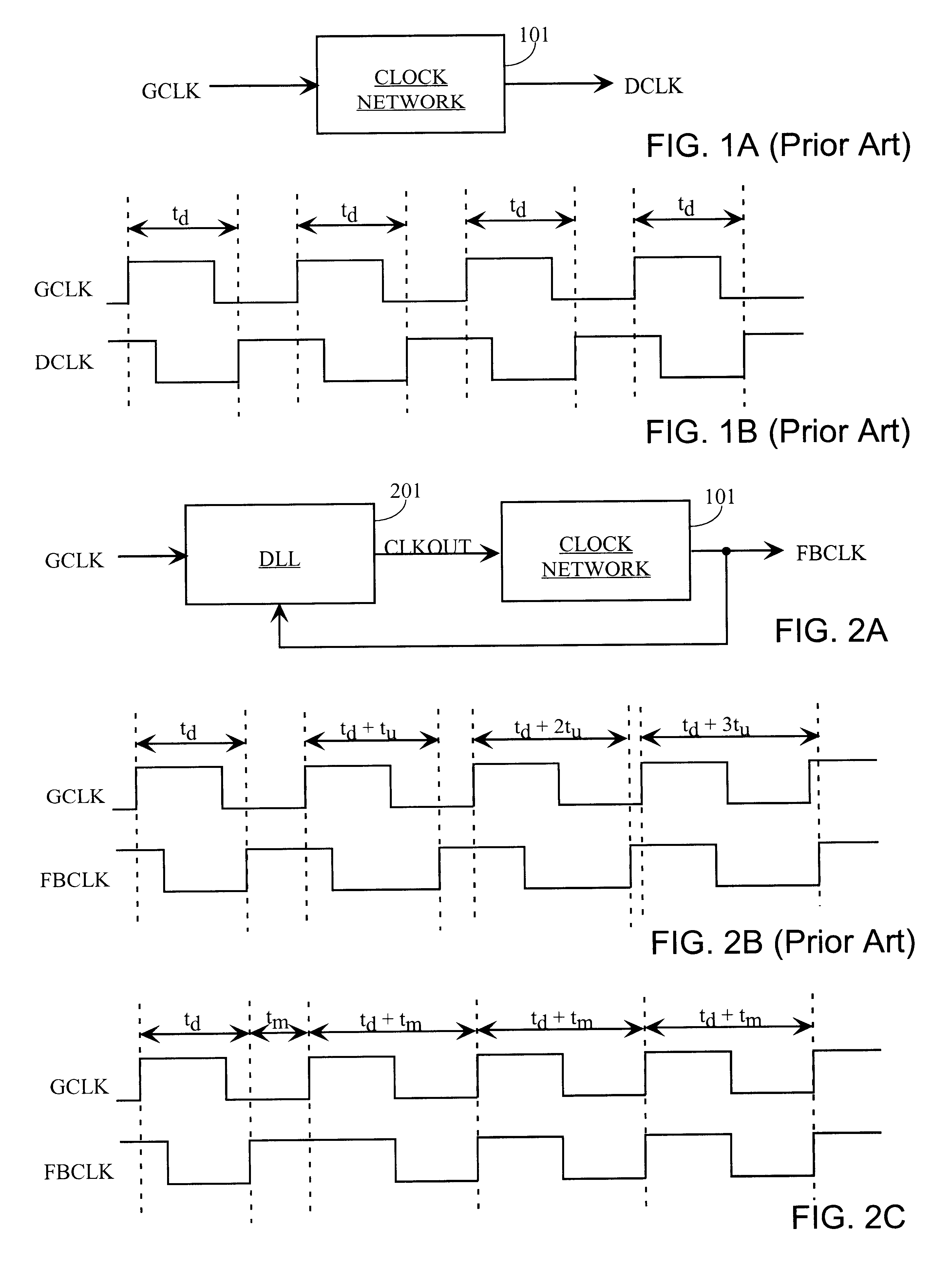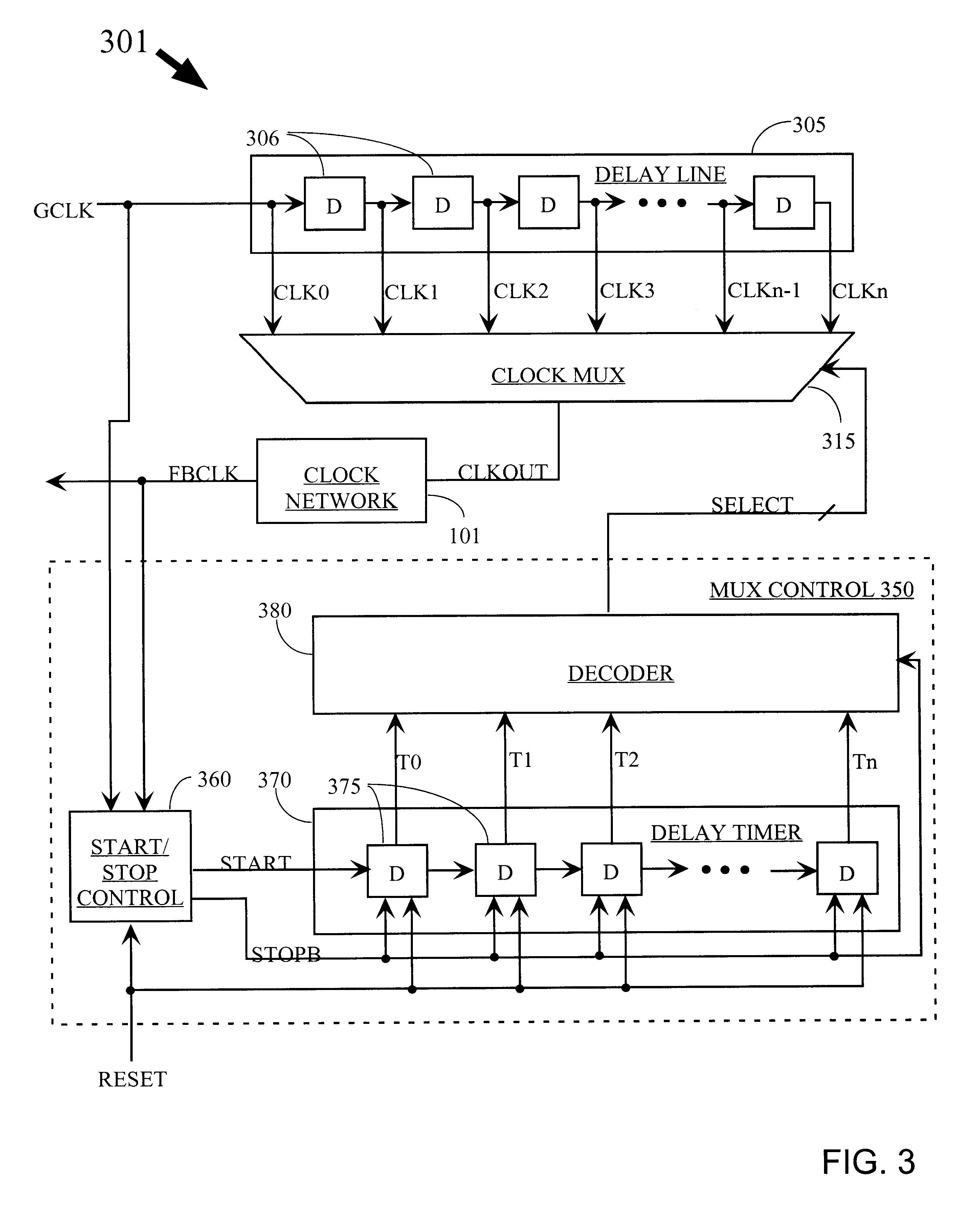One-shot DLL circuit and method
- Summary
- Abstract
- Description
- Claims
- Application Information
AI Technical Summary
Benefits of technology
Problems solved by technology
Method used
Image
Examples
second embodiment
FIG. 4 shows a second embodiment of the invention. The embodiment of FIG. 4 includes several optional features not included in the embodiment of FIG. 3. Although these features are all shown in a single embodiment, they can be separately used or omitted, and the resulting circuits fall within the spirit and scope of the invention. The invention includes these and other variations on the basic concepts described herein.
The block diagram shown in FIG. 4 is similar to that of FIG. 3, and therefore is not described in detail here, except where the embodiment of FIG. 4 differs from that of FIG. 3. However, logic blocks that were previously described only in terms of their function are shown in more detail in relation to this embodiment.
FIG. 5A is a block diagram of a Start / Stop control circuit that can be used with the embodiment of FIG. 4. Input signals to the control circuit include input clock signal GCLK, feedback clock signal FBCLK, and an enable / disable control signal DLL_ENB, whic...
PUM
 Login to View More
Login to View More Abstract
Description
Claims
Application Information
 Login to View More
Login to View More - R&D
- Intellectual Property
- Life Sciences
- Materials
- Tech Scout
- Unparalleled Data Quality
- Higher Quality Content
- 60% Fewer Hallucinations
Browse by: Latest US Patents, China's latest patents, Technical Efficacy Thesaurus, Application Domain, Technology Topic, Popular Technical Reports.
© 2025 PatSnap. All rights reserved.Legal|Privacy policy|Modern Slavery Act Transparency Statement|Sitemap|About US| Contact US: help@patsnap.com



